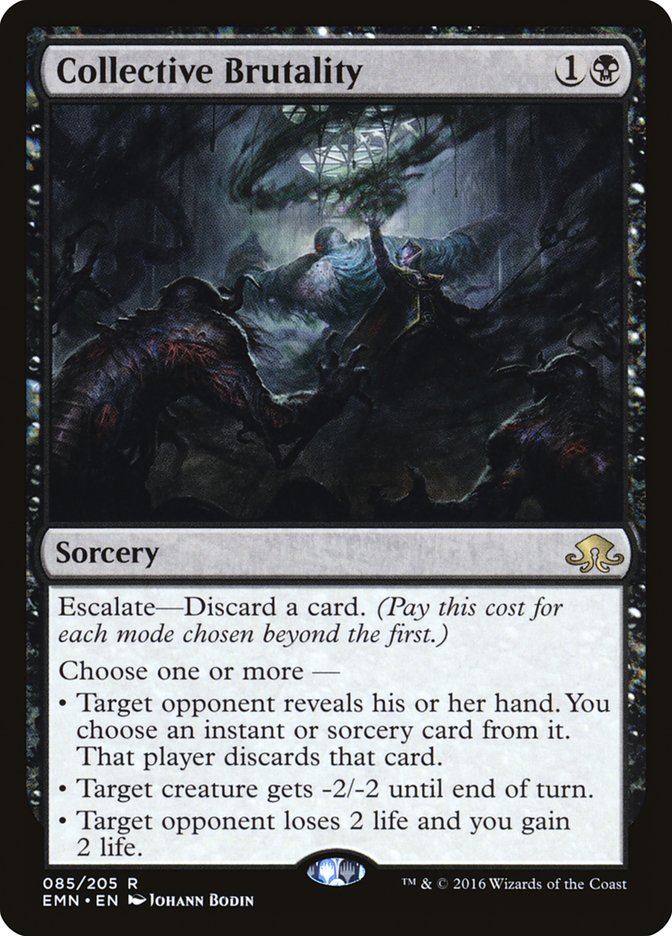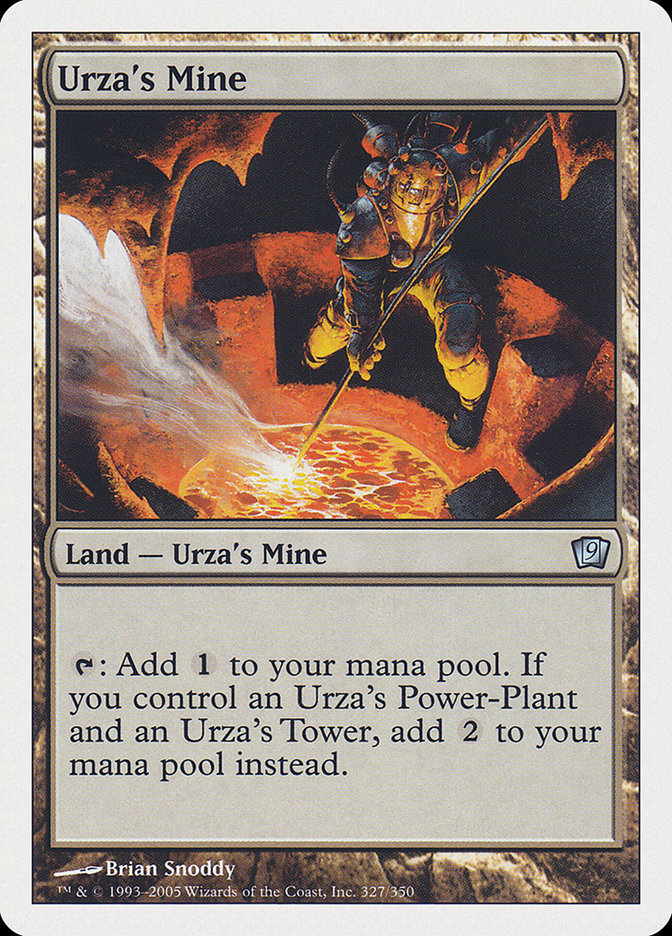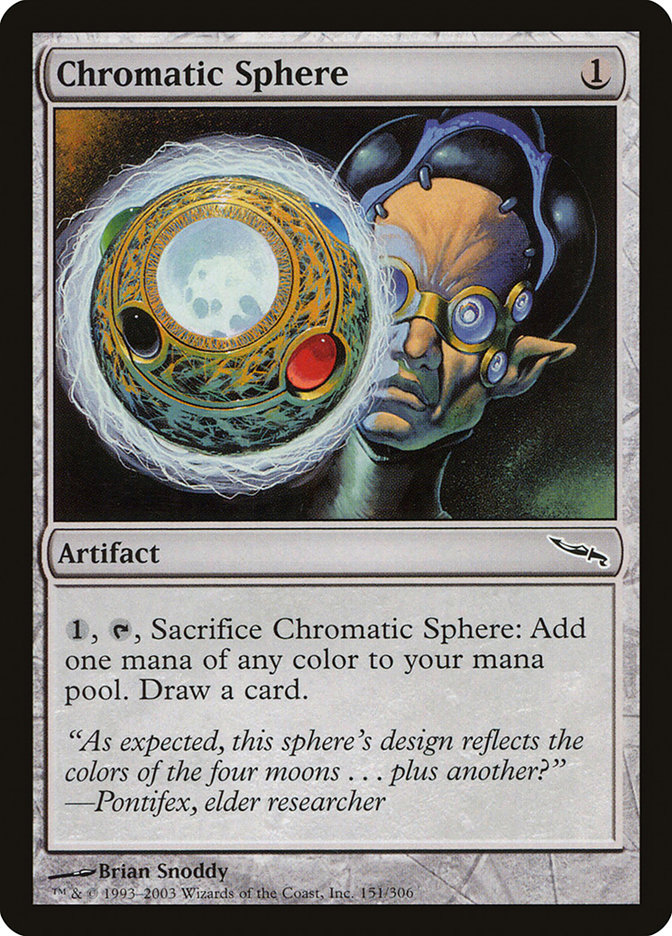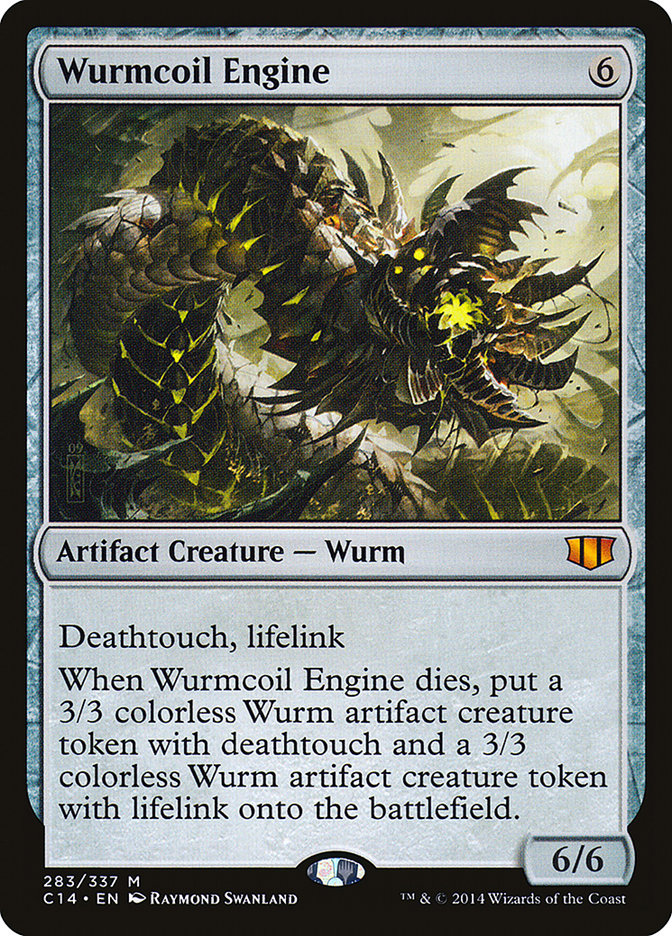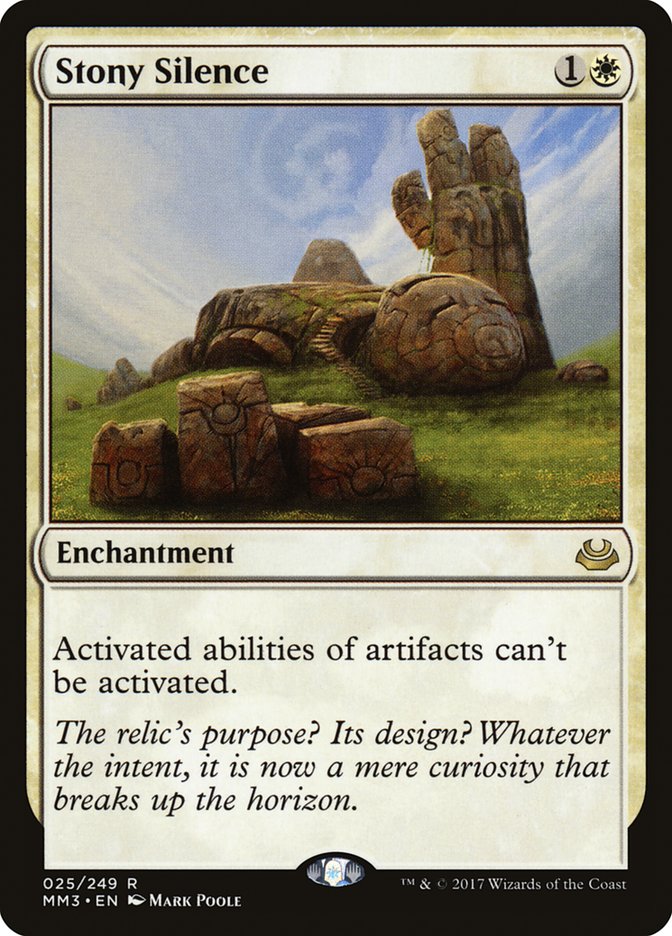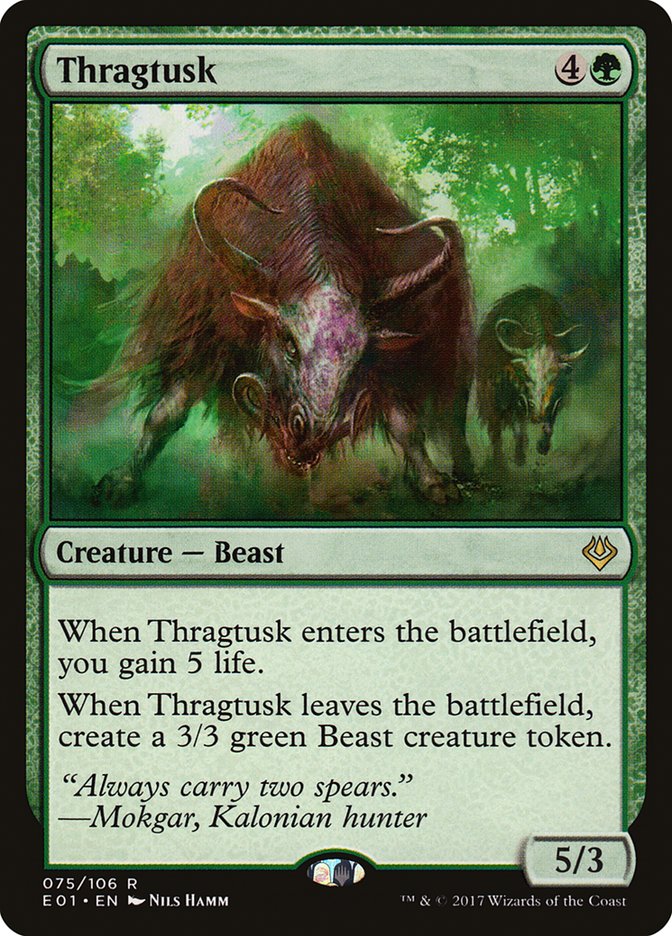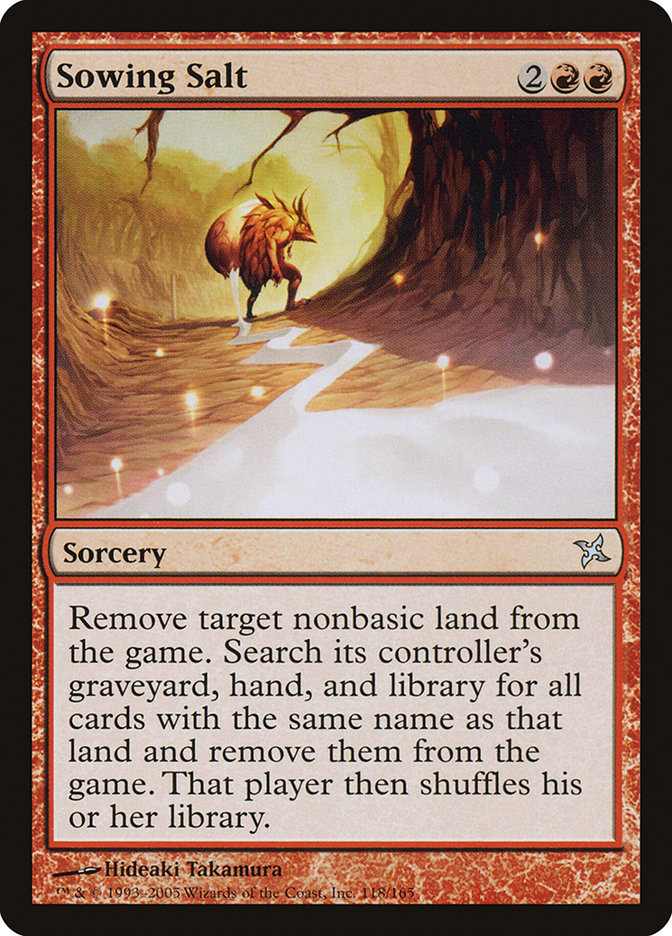Well, the secret is out… Tron is strong in Modern once again.
I’ve been playing G/B Tron in Modern for the last few months and have been extremely impressed by how consistent and well-positioned it has been. The deck does its thing and does it well, and many decks in the format have little chance of competing with it. Even difficult matchups like Storm were winnable with the various tools the deck has, and any bad matchup turns okay when a Turn 3 Karn Liberated is involved.
My only regret is that I was not able to capitalize on being “in the know” by actually winning an event. My last few SCG Tour events with the deck have been a hodgepodge of medium play and Top 16s, including SCG Charlotte, where I went 11-4 and all four of my losses were due to poor play. My teammates all laughed at me each time I registered the deck, but I never got to say “Who’s laughing now?” and throw a trophy or Top 8 in their faces. I did well with the deck at #SCGINVI, but my poor Standard record killed any chances of a good finish.
But enough about me. Today it’s time to spill the beans on everything I know about G/B Tron.
Creatures (6)
Planeswalkers (6)
Lands (19)
Spells (29)

The core of the G/B Tron deck hasn’t changed much over the years, and frankly I still find the eight Chromatic Star / Chromatic Sphere package to be a work of deckbuilding genius. Pretty much every Tron deck is going to have this main core:
Which actual big mana threats and filler interactive spells the deck plays depends on the format, with your second color (or lack thereof) being the biggest choice to make.
The black package is currently the best way to build the deck. Fatal Push gives you a nice touch of interaction in Game 1 that plays extremely well with your Chromatic Star effects and can buy you time to set up and deal with annoying creatures in the early-game. From the sideboard, your discard spells help to shore up difficult combo matchups, with Collective Brutality just an absurdly powerful card in many matchups. Splashing a color is fairly trivial, and the rewards are worth the cost.
Playing the Deck
The most critical element to playing any Tron deck is how you sequence your early turns. Your opening hand is extremely important, but so is maximizing each potential draw step in order to get Tron online as fast as possible. You rarely will have everything you need, so you must get your missing pieces in a manner that efficiently maximizes your odds of getting there.
Here are some general guidelines to follow:
Pairs Are Bad!
We’re not playing poker. Fundamentally, Tron is a deck looking to assemble a lot of difference pieces. You want one copy of every piece, as each extra piece ends up being redundant. That second Urza’s Tower, Llanowar Wastes, or Wurmcoil Engine is going to be worlds worse than the first. Keep this in mind when looking at opening hands and making choices in the early-game.
Mulligans Are Great!
The scry rule is great for Tron. Keepable hands should have at least two Tron lands or one Tron land and multiple ways to find more. Your opening hand is your most powerful resource and you don’t need a lot of actual cards as long as you have the right ones. Don’t be afraid to mulligan! That second Urza’s Mine is basically just a mulligan anyway.
Every Land Drop Is Paramount!
The speed at which you can get Tron online is naturally limited by your per-turn land drop limit. Every turn you are playing a land that is not a unique Tron piece or a colored source is one more turn you must wait until getting Tron online. As such, you almost always want to play a Tron land on Turn 1, and you want to avoid making non-unique Tron land drops as often as you can. Sometimes it is necessary, but try to see how many cards you can see before you are forced into playing that Llanowar Wastes.
Know Your Script
You need to have your first few turns planned out, but also be ready to rewrite the script based on what you draw. As such, you rarely want to be cracking an Expedition Map on Turn 2 when you only have one Tron piece and are just guessing on which other one to get. Use your Chromatic Stars and draw steps to delay needing to decide what to get until you have more information. Always set yourself up for the best-case scenario, but also have a plan for when things don’t go right.
Ancient Stirrings Is Your Best Card
Ancient Stirrings is definitely the best card in the deck, as it often functions as a one-mana Sylvan Scrying / Karn Liberated tutor split card. You can keep almost any one-land hand that has a Tron land, a Chromatic Sphere or Star, and an Ancient Stirrings, and be very happy about it.
Trust Your Deck
This one sounds kind of silly, but the truth is you often need to trust that your deck will deliver. You will be mulliganing aggressively and occasionally end up on a five-carder that looks like this:
It doesn’t feel great, but you’ve got a scry and are going to see a ton of cards to get things rolling. Tron is a highly redundant deck, and with so many of its cards trying to do the same thing, this hand will be casting Ulamog, the Ceaseless Hunger on Turn 4 or 5 often enough. Your goal is to maximize every card you see and give yourself the best chance to get there.
The Matchups
While Tron is a highly linear deck looking to do its own thing each game, what kind of threats or interaction your opponent is presenting will dictate much about your play, and especially your plan in post-sideboard games. We will go over as many matchup as we can, and while we won’t be able to hit every single deck in a wide-open Modern format, it’s not hard to transpose the principles of one to another. Think Jeskai Control and Grixis Control.
Creatures (8)
Lands (18)
Spells (34)

Let’s start with one of the tougher ones.
Spell-based combo decks often provide an issue for Tron, because most of our interactive cards like Oblivion Stone, Karn Liberated, and Ugin, the Spirit Dragon don’t really do a whole lot. We’re also weak to the card Remand, which can make this a difficult matchup.
However, their reliance on using a creature to go off and on their graveyard to simplify their kill does give us tools to interact via Fatal Push and Relic of Progenitus, respectively. Relic of Progenitus is your most important card Game 1, which makes finding it more important than even assembling Tron. Once you have one, they need to reach a critical mass of cards without Past in Flames to win, which can give you time to get your threats online. By the same logic, you should almost always be using the +4 ability on your Karn Liberated. Remand is also an important part of their no-graveyard kill, so don’t be afraid to make them use them.
In:
Out:
Post-sideboard against Storm, you turn into a weird sort of Jund deck. You use discard, Fatal Push, and Relic of Progenitus to keep them off-balance while beating them to death with life-gaining creatures. They are likely to bring in Empty the Warrens as another way to beat you, but don’t be fooled into thinking you still need Oblivion Stone or Ugin, the Spirit Dragon; Wurmcoil Engine, Thragtusk, and Walking Ballista each beat all but the biggest of Empty the Warrens straight-up, and your discard will force them into using it less than ideally.
Creatures (12)
Lands (20)
Spells (28)

You Game 1 against Burn is largely dependent on the die roll and the strength of your hand. If you have a Turn 3 Wurmcoil Engine or Karn Liberated on the play, they probably have no shot, but on average they are favored. Don’t be afraid to aggressively hit their white source if they only have one to turn off Boros Charm and Lightning Helix.
In:
Out:
Once you sideboard, you become a heavy favorite. Collective Brutality is a large reason for Burn falling from popularity, and you supplement Wurmcoil Engine with Thragtusk. Nature’s Claim gives you an extra answer to Eidolon of the Great Revel and can be used on your own artifacts to gain life. It can also fizzle a Path to Exile on Wurmcoil Engine for great value.
Lands (18)
Spells (42)

Lantern Control’s resurgence is a good thing for Tron, as trying to hide behind Ensnaring Bridge is a borderline embarrassing plan against Karn Liberated and friends. Tron has many ways to kill non-creature permanents, and the presence of a single copy of World Breaker means the Lantern player must find Pyxis of Pandemonium to deal with it.
Don’t forget that Chromatic Sphere is templated very bizarrely and differently from Chromatic Star. Chromatic Sphere can’t be responded to. Because of this, you can use it to draw a card off of the top of your deck that you want, and your Lantern opponent will not be able to mill it in response.
In:
Out:
After sideboarding, we get a pile of Vindicates and some discard. Sounds good to me.
Creatures (8)
Lands (27)
Spells (25)

Your TitanShift matchup is entirely contingent on a very small subset of cards (Karn Liberated, World Breaker, and Ulamog, the Ceaseless Hunger) and our ability to get Tron online as fast as possible. If we have Turn 3 Karn Liberated, we are a favorite, but all of our other payoff cards don’t really do anything. Mulligan very aggressively and pray to win the die roll.
In:
Out:
We sideboard in our discard spells and mulligan very aggressively. Thragtusk isn’t good, but if you can stay above eighteen life, you can force them to either need eight lands to Scapeshift or buy a turn against a Primeval Titan to get one of your big cards online. Mulligan any hand that doesn’t present a very fast threat.
Creatures (27)
- 4 Arcbound Ravager
- 4 Ornithopter
- 4 Master of Etherium
- 4 Steel Overseer
- 2 Memnite
- 4 Signal Pest
- 4 Vault Skirge
- 1 Hope of Ghirapur
Lands (17)
Spells (16)
Sideboard

You can’t beat their best hands in Game 1, but few decks can. Oblivion Stone is a huge blowout, but beware of Inkmoth Nexus. They often only have a few cards that actually matter, which makes Karn surprisingly good against them. Slow them down and do your thing.
In:
Out:
After sideboarding, things get a whole lot better. You get four copies of Vindicate and Ghost Quarter to help protect you against Inkmoth Nexus. This matchup is favorable.
Creatures (16)
Lands (18)
Spells (26)

The Grixis Death’s Shadow matchup is tense, but you are a slight favorite if they haven’t adopted maindeck Temur Battle Rage like Austin Collins did. With Temur Battle Rage, they can steal games that you would likely win, so be wary of it.
Game 1 your creature threats are paramount, as they have no good way to beat a Wurmcoil Engine. Your noncreature spells are still good but vulnerable to Stubborn Denial. Game 1 you can usually overpower them as long as they don’t draw too many copies of Thoughtseize.
In:
Out:
With Fatal Push for Death’s Shadow and Relic of Progenitus to slow their delve threats down, you have the tools to interact with them, but post-sideboard results will often come down to how many copies of Ceremonious Rejection and Disdainful Stroke they brought. Austin here has a ton, but most only have a pair of Ceremonious Rejections. This puts a premium on creature threats that aren’t colorless, which makes Thragtusk great.
Creatures (19)
- 1 Wurmcoil Engine
- 2 Endbringer
- 4 Reality Smasher
- 4 Thought-Knot Seer
- 4 Matter Reshaper
- 4 Walking Ballista
Planeswalkers (2)
Lands (24)
Spells (15)

With your ability to go way over the top of Eldrazi Tron, your matchup against them is very favorable. In fact, their best cards against you are the ones that probably shouldn’t be in their deck, like Ulamog, the Ceaseless Hunger and Karn Liberated. If they have their natural Tron or a great Eldrazi Temple draw, they can pressure you, but they can’t deal with your end-game and usually give you enough time to get there.
In:
Out:
Post-sideboard you get to trim the fat and bring in Thragtusk, which matches up very well against their creatures and makes Ghost Quarter look silly. Chalice of the Void on one is surprisingly effective against us, so Seal of Primordium comes in as a hedge against that.
Creatures (11)
Lands (24)
Spells (25)

Tron feasts on these sorts of slow midrange decks. With no way to actually attack you until Turn 4 and only a few counterspells to keep your major threats at bay, Jeskai decks end up being a cross between a bad burn deck and a bad control deck against you.
Your goal is to respect their ability to burn you out, play around their minor counterspells, and just do your thing.
In:
Out:
Thragtusk does everything you’d want it to in this matchup, increasing your threat density while being resistant to removal and keeping you out of burn range.
While Mark’s list here doesn’t have any copies of Stony Silence, we bring in our copies of Nature’s Claim in almost all of these fair white matchups. It provides us insurance against Stony Silence while also giving us a great response to a Path to Exile on our Wurmcoil Engine. It’s also important to hedge against Stony Silence whenever we can by trimming our unnecessary artifacts. Relic of Progenitus is fine against decks like this, but often not what the game is going to end up being about. I’d much rather not have Relic of Progenitus at all than risk drawing it when under Stony Silence. A Turn 1 Relic of Progenitus may inspire them to just cast Snapcaster Mage on turn two, which is surprisingly probably correct in this matchup!
Creatures (37)
- 4 Meddling Mage
- 1 Dark Confidant
- 4 Noble Hierarch
- 4 Champion of the Parish
- 3 Mayor of Avabruck
- 4 Thalia, Guardian of Thraben
- 4 Mantis Rider
- 4 Reflector Mage
- 4 Thalia's Lieutenant
- 1 Thalia, Heretic Cathar
- 4 Kitesail Freebooter
Lands (19)
Spells (4)

Another great matchup. They have to hit you with numerous copies of Kitesail Freebooter and Meddling Mage to really have a chance. Oblivion Stone and Ugin, the Spirit Dragon both win the game almost on the spot, with our other threats also being good. They can’t interact with your lands in any meaningful way.
In:
Out:
Cut the fat, bring in Thragtusk, and show them what’s up. Just be aware of Meddling Mage, which is why I bring in a Collective Brutality as nothing more than a Disfigure to hedge our removal a little.
Creatures (23)
- 2 Golgari Thug
- 4 Stinkweed Imp
- 4 Narcomoeba
- 4 Bloodghast
- 4 Prized Amalgam
- 4 Insolent Neonate
- 1 Haunted Dead
Lands (21)
Spells (16)

Dredge is another powerful aggressive deck that’s just not fast enough to keep up with our big payoff cards. Oblivion Stone can buy a ton of time, and Ugin, the Spirit Dragon is just lights out. Wurmcoil Engine is a huge problem for them, and your main concern is to just not get burned out by Conflagrate.
Oh, and did I mention we have triple maindeck Relic of Progenitus?
In:
Out:
They don’t really have any extra tools against you after sideboarding except for maybe a few Thoughtseizes, so just do your usual thing with a Thragtusk or two tossed in for good measure.
Creatures (6)
Planeswalkers (6)
Lands (19)
Spells (29)
- 4 Oblivion Stone
- 4 Sylvan Scrying
- 4 Chromatic Sphere
- 4 Chromatic Star
- 3 Relic of Progenitus
- 4 Expedition Map
- 4 Ancient Stirrings
- 2 Fatal Push
Sideboard

Ah, the mirror. I spent some time during last week chatting with Corey Baumeister about the deck, and it looks like Corey and Seth ended up on mostly my list. The Mono-Green list seems worse overall but better in the mirror, thanks to its extra land destruction effects and copies of Thought-Knot Seer in the sideboard.
The mirror frankly isn’t very fun and is mostly about who can cast Karn Liberated or World Breaker first. Nothing else really matters, so win the die roll and mulligan aggressively for a fast hand.
In (on the play):
Out (on the play):
In (on the draw):
Out (on the draw):
After sideboarding, not much changes. You still want to mulligan very aggressively and put all your emphasis on just casting Karn Liberated as soon as possible. On the play, you bring in your artifact removal to try to snipe a Turn 1 Expedition Map if you can, but don’t bother on the draw.
Creatures (30)
- 4 Birds of Paradise
- 3 Eternal Witness
- 4 Devoted Druid
- 4 Kitchen Finks
- 4 Tidehollow Sculler
- 1 Noble Hierarch
- 1 Viscera Seer
- 1 Scavenging Ooze
- 2 Duskwatch Recruiter
- 1 Walking Ballista
- 1 Rhonas the Indomitable
- 4 Vizier of Remedies
Lands (22)
Spells (8)

Unless they combo you on Turn 3 or 4, this is a great matchup. Your copies of Fatal Push excel here in slowing them down long enough to get things going, since it’s another deck that can’t handle Oblivion Stone or especially Ugin, the Spirit Dragon. Be aware of the possibility of Selfless Spirit coming from a Chord of Calling in response to an Oblivion Stone and don’t die on Turn 3 and you’ll be fine.
In:
Out:
Out comes the trash and in comes one of the best sideboard cards in the format against them. Kill their best creature, take their Collected Company or Chord of Calling, and do your thing.
Creatures (4)
Planeswalkers (5)
Lands (26)
Spells (25)

While most fair matchups are usually a cakewalk for Tron, U/W Control presents a lot of interesting obstacles. With full playsets of Field of Ruin and Spreading Seas, assembling and keeping Tron online is not a given, which can theoretically give them enough time to kill you with various planeswalkers.
Still, they are very slow and will give you a lot of time to either reassemble Tron over and over again or just cast your spells the hard way.
In:
Out:
Post-sideboard, our goal is to increase our threat density, reduce our weakness to Field of Ruin, and circumvent the damage that Stony Silence can do. You’re in for a long game with a lot of choices, but you are a favorite overall.
The Others
The decks in Modern are innumerable, which makes a proper sideboard guide almost impossible. However, you can derive most things you would need to know from this guide by applying the ideas to other matchups. The card we saw the least was in this guide was the Snow-Covered Swamp, which is used to combat various Ghost Quarter decks in conjunction with Thragtusk. Having an extra basic to search for is very nice in any sort of Death and Taxes matchup.
Perhaps the most important card in our sideboard is Thragtusk.
Thragtusk comes in for almost every fair matchup, as well as many of the combo matchups as well in conjunction with your discard. The power level of the card is very high, and it completely jukes most cards that your opponent will bring in to interact with you. If they try to Ghost Quarter you or waste a turn playing Blood Moon, you take advantage of the tempo they waste and just ram Thragtusk down their throat. Thragtusk will either win the game by itself or buy you time to rebuild your manabase.
When in Doubt, Turn 3 Karn
Modern is a hostile and powerful format where having an almost unbeatable “nut draw” is a huge plus. Even in your bad matchups, if you just cast Karn Liberated on Turn 3 you are likely a favorite.
G/B Tron is powerful, consistent, and proactive, which is everything I want to be doing in Modern. Playing Tron really is embracing Modern as a format, and I’m not surprised it is the deck I’ve had the most Modern success with in a long time. It may become a victim of its own success over the next few weeks, but fighting through the hate is definitely possible.
Plus, for some reason Magic players really hate losing to Tron (myself included). It’s nice to be on the other side of the table sometimes!



